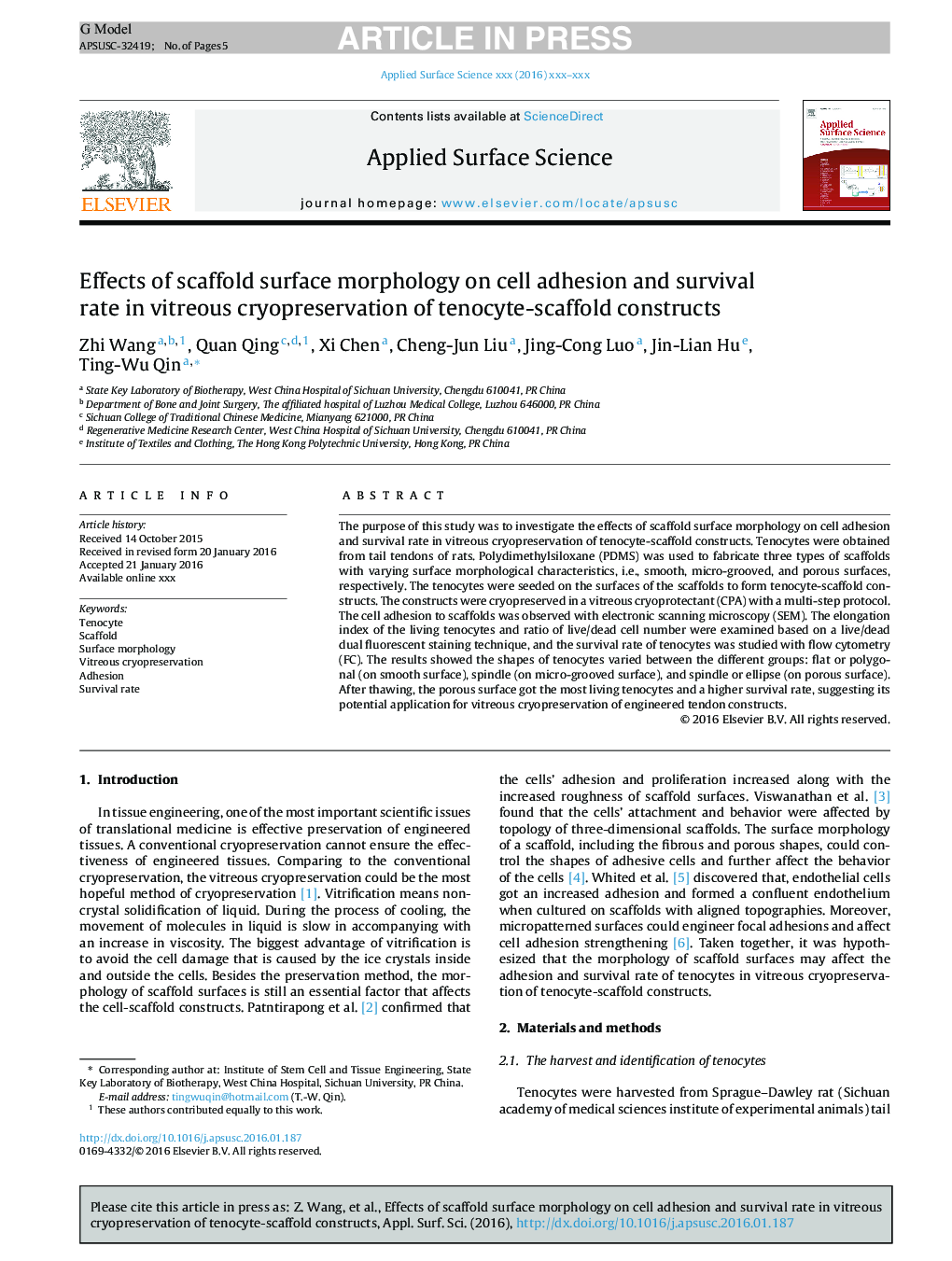| Article ID | Journal | Published Year | Pages | File Type |
|---|---|---|---|---|
| 5348531 | Applied Surface Science | 2016 | 5 Pages |
Abstract
The purpose of this study was to investigate the effects of scaffold surface morphology on cell adhesion and survival rate in vitreous cryopreservation of tenocyte-scaffold constructs. Tenocytes were obtained from tail tendons of rats. Polydimethylsiloxane (PDMS) was used to fabricate three types of scaffolds with varying surface morphological characteristics, i.e., smooth, micro-grooved, and porous surfaces, respectively. The tenocytes were seeded on the surfaces of the scaffolds to form tenocyte-scaffold constructs. The constructs were cryopreserved in a vitreous cryoprotectant (CPA) with a multi-step protocol. The cell adhesion to scaffolds was observed with electronic scanning microscopy (SEM). The elongation index of the living tenocytes and ratio of live/dead cell number were examined based on a live/dead dual fluorescent staining technique, and the survival rate of tenocytes was studied with flow cytometry (FC). The results showed the shapes of tenocytes varied between the different groups: flat or polygonal (on smooth surface), spindle (on micro-grooved surface), and spindle or ellipse (on porous surface). After thawing, the porous surface got the most living tenocytes and a higher survival rate, suggesting its potential application for vitreous cryopreservation of engineered tendon constructs.
Related Topics
Physical Sciences and Engineering
Chemistry
Physical and Theoretical Chemistry
Authors
Zhi Wang, Quan Qing, Xi Chen, Cheng-Jun Liu, Jing-Cong Luo, Jin-Lian Hu, Ting-Wu Qin,
